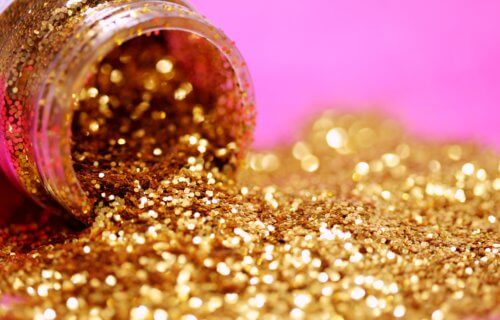SÃO PAULO, Brazil — Festive glitter, a common ingredient in makeup, greeting cards, and holiday decorations, may have a darker side than its shiny surface suggests. Researchers from the University of São Paulo (USP) in Brazil have found that glitter can negatively impact aquatic organisms vital to underwater ecosystems, with several million metric tons winding up in the oceans.
Popular in various products, from nail polish to Carnival costumes, glitter’s persistence isn’t just annoying for those trying to wash it off. Composed of microplastics – tiny particles smaller than five mm, typically made from materials like polyethylene terephthalate (PET) or polyvinyl chloride (PVC) – these glitters are coated with aluminum for a shimmering effect. The issue is these microplastics are too minuscule for wastewater treatment plants to filter out, leading to an alarming estimate of over eight million metric tons of glitter ending up in our oceans recently.
Since glitter doesn’t break down naturally, it poses several threats to aquatic life: ingestion, contact with its toxic ingredients, and injury from its sharp edges. Glitter’s unique size, shape, and makeup make it difficult to measure how much is contaminating our waters.
Scientists analyzed glitter’s effects on two types of cyanobacteria or blue-green algae, which are fundamental to aquatic ecosystems. These algae contribute to water and soil cycles and serve as food for other organisms.

Using advanced techniques, scientists assessed the growth of these algae when exposed to varying glitter concentrations.
“We found that increasing the amount of glitter raised the biovolume of the cyanobacterial cells and boosted stress to levels that even impaired photosynthesis,” says study first author Mauricio Junior Machado, a researcher in CENA-USP’s Cellular and Molecular Biology Laboratory, in a media release. “The toxicity of glitter for microorganisms has hardly been studied at all. Whatever affects cyanobacteria will indirectly affect other organisms in the same environment.”
Exposure to certain levels of glitter severely impacted the growth rates of these algae. The negative effects became most pronounced on the 21st day of their experiment.
“Glitter is sold for use in festivities, where people spare little thought for the environmental problems it causes,” notes study last author Marli de Fátima Fiore. “However, it’s necessary to bear in mind that microplastics contaminate and damage marine and freshwater ecosystems, which are extremely important to our lives, and to think about campaigns to avoid microplastic pollution as much as possible.”
The team plans to continue their research, testing the effects on other types of cyanobacteria and investigating if “biodegradable” glitter is genuinely less harmful to aquatic life.
The study is published in the journal Aquatic Toxicology.
You might also be interested in:
- Glitter ruining the environment? Even biodegradable versions cause serious damage to rivers and lakes
- Plastic pollution may be creating a whole new ecosystem in the ocean
- Best Eco-Friendly Nail Polish: Top 5 Brands Recommended By Beauty Experts

